#Essex coast
Text

Ariel Scarlet wants you to know that castles should have walls and ceilings.
Read Rotting Trees here.
2 notes
·
View notes
Text




USS FRANKLIN (CV-13) at Puget Sound Navy Yard, Washington after repairs.
Note: "she had been repainted in Ms. 21 camouflage; two lattice radio masts abaft the island had been removed; three quad 40's had been added starboard amidships, just under the island."
Date: January 31, 1945
source
#USS FRANKLIN (CV-13)#USS FRANKLIN#Essex Class#Aircraft Carrier#Carrier#Warship#ship#United States Navy#U.S. Navy#US Navy#USN#Navy#Puget Sound Navy Yard#Puget Sound#Washington#West Coast#World War II#World War 2#WWII#WW2#WWII History#History#Military History#January#1945#my post
71 notes
·
View notes
Text
Is Home a Place, a Feeling, or a Relationship?
Is Home a Place, a Feeling, or a Relationship? #home #whatishome #homeness
Is Home a Place, a Feeling, or a Relationship? (Source: Geo Davis)
In the days since publishing “What Makes a House a Home?” I’ve been fortunate to enjoy follow up exchanges with many of you. It seems that we all have some compelling notions of homeness! Thank you for reaching out and sharing your often personal stories. I’ve mentioned to several of you that I’d like to dive in a little deeper…

View On WordPress
#Adirondack Coast#barns#boathouse gangway#Boquet#Carley#Carriage Barn#Essex New York#Griffin#Historic Property#Home#icehouse#icehouse rehabilitation#Labrador Retriever#Lake Champlain#Notion of home#Poetics of Place#Question of the Day#Rosslyn#Sketch#Susan#Tasha#The Farm#Watercolor#wonder
2 notes
·
View notes
Text
#ocean view#oceanvibes#seascape#film photography#analog photography#black and white#north shore ma#north shore boston#beverly massachusetts#essex county massachusetts#coastal#atlantic coast
0 notes
Text
Milestone Monday
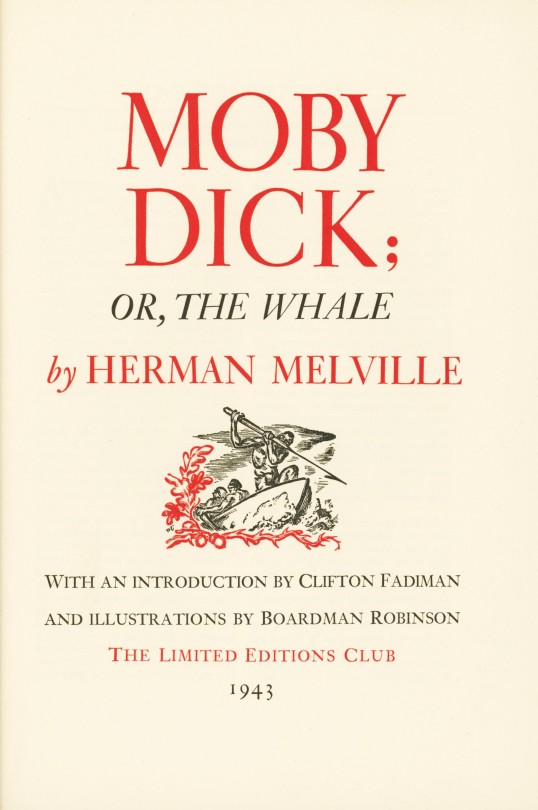
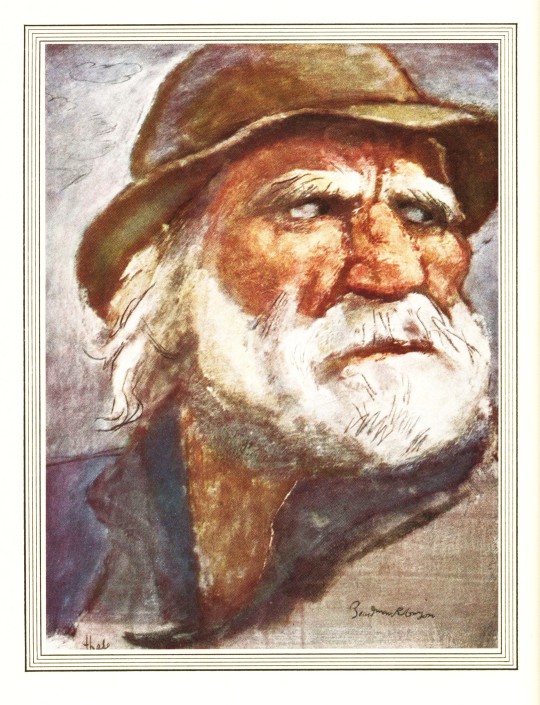


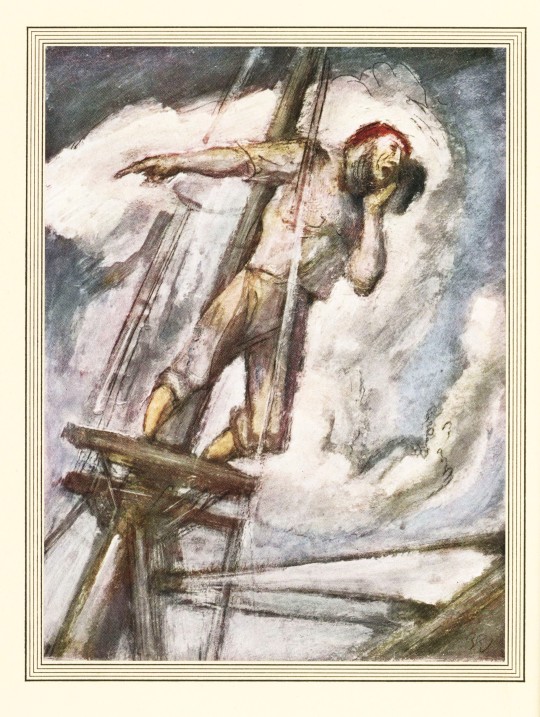
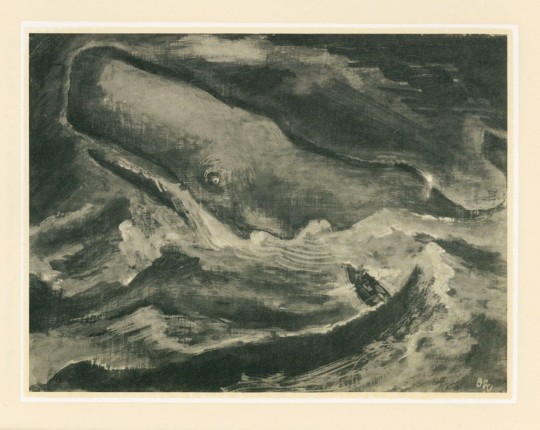


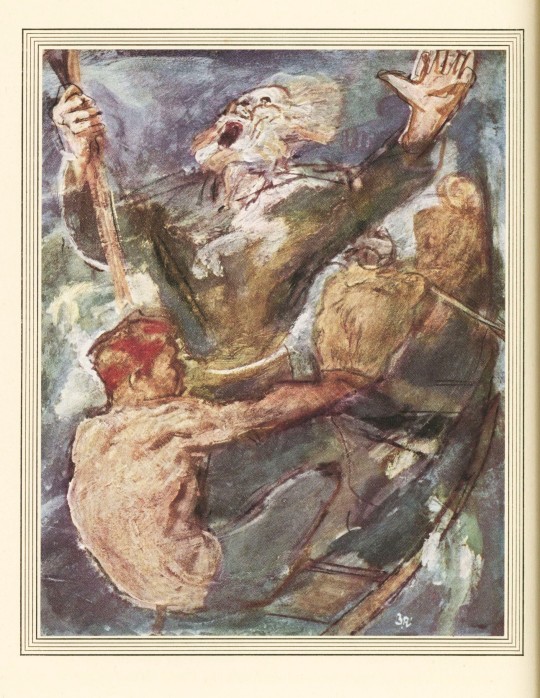


On this day, November 20, 1820, an 80-ton sperm whale rammed and sank the Essex whaling ship in the South Pacific inspiring Herman Melville (1819-1891) to write his legendary novel Moby Dick.
The Essex set sail from Nantucket in August of 1819 with a 21-man crew in search of dwindling sperm whales. Over a year into their voyage, their captain decided to head further off the coast of the Galapagos than usual, finding themselves more than 1,500 nautical miles from the nearest shore. The bet paid off when the Essex came upon a pod of whales and set out in three whaleboats to harpoon them.
While they were away, their luck quickly changed when a monstrously sized sperm whale began ramming and ultimately capsized the Essex. Initially, all members of the crew survived the wreck and equipped their whaleboats with sails to head for land, however perilous weather and sparse rations soon took their toll. Within months, crew members were dying and left their companions to turn to cannibalism to survive. Ultimately, five men of the Essex were rescued by passing ships and lived to tell their tale.
To mark the fate of the Essex we are looking at The Limited Editions Club (LEC) 1943 publication of Moby Dick; or The Whale presented in two volumes with illustrations by Boardman Robinson (1876-1952). Melville’s story of Captain Ahab and the great white whale is accentuated by Robinson’s muddy paintings that emulate the churning ocean adding foreboding layers throughout the book. Of the thirty-two paintings Robinson created for Moby Dick; or The Whale, eight are reproduced in full color with the other twenty-four reproduced “through an ingenious combination of the silk-screen process, offset lithography and varnish.” The volumes were printed by E.L. Hildreth and Co., bound in full sheepskin leather dyed to stimulate whale hides, and stamped in gold.
Our copy of Moby Dick; or The Whale is number 289 from the collection of long-standing LEC member Austin Fredric Lutter of Waukesha, Wisconsin and is signed by the illustrator.
View other Milestone Monday posts here.
– Jenna, Special Collections Graduate Intern
#milestone monday#Essex#Moby Dick#Herman Melville#Limited Editions Club#LEC#Boardman Robinson#E.L. Hildreth and Co.#whales#paintings#lithography#milestones
114 notes
·
View notes
Text

‘Boats at Burnham on Crouch (Essex Coast)’ ,1956.
Michael Rothenstein
35 notes
·
View notes
Text
The Retired Colourman
Published in 1926, this was placed last in the Case-book compilation, although it was not the last Holmes story Doyle published. That is "Shoscombe Old Place", which we have yet to cover.
A colourman is someone who makes and sell paint. The term is very little used these days.
Lewisham is a London suburb located six miles from Charing Cross; it had transferred from Kent to London in the 1889 creation of the London County Council and today forms its own London Borough.
The Coptic Pope at the time was Cyril V, who reigned from 1874 to 1927, the longest serving head of the Coptic Orthodox Church.
The Theatre Royal Haymarket was opened in 1720 and remains in use today as a theatre. It's currently running a production of Noises Off and next year will play host to The Picture of Dorian Gray, which is going to see Sarah Snook play all 26 roles.
Blackheath is a suburban station today served by electric trains operated by Southeastern from Victoria, Charing Cross and Cannon Street.
Lothario dates back to Don Quixote as a name, but its use for a serial seducer of women comes from the 1703 Nicholas Rowe play The Fair Penitent.
Crockford's Clerical Directory is a book listing clergy in the UK and Ireland.
Little Purlington is fictitous, but Frinton is real. Now Frinton-on-Sea, it is located on the Essex coast and by 1927 was attracting regular high society visitors. Former residents of note include Deborah Watling, who played Victoria Waterfield in Doctor Who. Due to its reputation as a place to retire to, it became the subject of a common joke "Harwich for the Continent, Frinton for the incontinent", the former being an LNER advertising slogan. Probably not a good idea to make that gag locally though.
Third Class trains had originally been ones with wooden seating, but by this time, Second Class had been abolished and the former passengers were now generally in upholstered carriages. Third Class became Second Class in 1956 on British Railways and is now Standard Class.
I have been unable to find when cyanide pills became a thing. Doing a search for them gives you the number of a suicide prevention line first, which is quite reasonable.
Broadmoor is a high-security psychiatric hospital in Berkshire, completed in 1863. Notable patients have included Ronald 'Ronnie' Kray, 'Yorkshire Ripper' Peter Sutcliffe and Edward Oxford, a barman who tried to kill Queen Victoria. Until 2018, it maintained sirens to be used in case of an escape.
29 notes
·
View notes
Text
Calendar of Resistance for Palestine! Events and actions around the world
Saturday, November 25
ARGENTINA
BUENOS AIRES, ARGENTINA – Sat Nov 25, 11 am, Parque Centenaria (Bicycles for Palestine.)
AUSTRALIA
CANBERRA, AUSTRALIA – Sat Nov 25, 1 pm, Garema Place.
GEELONG, AUSTRALIA – Sat Nov 25, 12 pm, 115 Moorabool St, march to Marles’ ministerial office.
GOLD COAST, AUSTRALIA – Sat Nov 25, 3 pm, Broadwater Parklands.
HOBART, AUSTRALIA – Sat Nov 25, 1 pm, Davey St.
LAUNCESTON, AUSTRALIA – Sat Nov 25, 2 pm, Civic Square.
PADSTOW, AUSTRALIA – Sat Nov 25, 12:30 pm, UMA Centre.
WOLLONGONG, AUSTRALIA – Sat Nov 25, 2 pm, Crown St Amphitheatre.
AUSTRIA
WIENER, AUSTRIA – Sat Nov 25, 2 pm, Wiener Neustadt, Herzog Leopoldstrasse 32.
VIENNA, AUSTRIA – Sat Nov 25, 3 pm, Christian-Broda-Platz.
BELGIUM
BRUSSELS, BELGIUM – Sat Nov 25, 6 pm, Gare Centrale.
CANADA AND QUEBEC
MONTREAL, QUEBEC – Sat Nov 25, 1 pm, Place des Arts.
OTTAWA, CANADA – Sat Nov 25, 1 pm, Parliament Hill.
VANCOUVER, BC (CANADA) – Sat Nov 25, 2 pm, Vancouver Art Gallery.
SAINT JOHN, NB (CANADA) – Sat Nov 25, 12 pm, King’s Square.
WINNIPEG, MANITOBA (CANADA) – Sat Nov 25, 1 pm, Manitoba Legislative Bldg.
ENGLAND
ALTRINCHAM, ENGLAND – Sat Nov 25, 11 am, Barclays Bank, George St.
BLACKBURN, ENGLAND – Sat Nov 25, 11 am, Barclays Bank, Darwen St.
BOLTON, ENGLAND – Sat Nov 25, 11 am, Barclays Bank, Market St.
BRIGHTON, ENGLAND – Saturday Nov 25, 12 pm, Clock Tower.
BURY, ENGLAND – Sat Nov 25, 11 am, Barclays Bank, Central St.
ESSEX, ENGLAND – Sat Nov 25, 12 pm, Square 5.
LIVERPOOL, ENGLAND – Sat Nov 25, 2 pm, Bombed Out Church.
LONDON, ENGLAND – Sat Nov 25, 12 pm, Park Lane, Central London.
MANCHESTER, ENGLAND – Sat Nov 25, 11 am, Piccadilly Gardens.
OLDHAM, ENGLAND – Sat Nov 25, 11 am, Barclays Bank, High St.
ROCHDALE, ENGLAND – Sat Nov 25, 11 am, Barclays Bank, Yorkshire St.
STOCKPORT, ENGLAND – Sat Nov 25, 11 am, Barclays Bank, Bridge St.
FRANCE
MONTPELLIER, FRANCE – Sat Nov 25, 4 pm, Place de la Comedie.
PARIS, FRANCE – Sat Nov 25, 2 pm, Place de la Nation.
TOULOUSE, FRANCE – Sat Nov 25, 5 pm, Metro Reynerie
GERMANY
AACHEN, GERMANY – Sat Nov 25, 3:30 pm, Hauptbahnhof
BERLIN, GERMANY – Sat Nov 25, 3 pm, Oranienplatz.
BERLIN, GERMANY – Sat Nov 25, 3 pm, Anhalter Bahnhof.
DRESDEN, GERMANY – Sat Nov 25, 2 pm, Wiener Platz
FRANKFURT, GERMANY – Sat Nov 25, 3 pm, Hauptwache.
FREIBURG AM BREISGAU, GERMANY – Sat Nov 25, 11 am, Augustinerplatz.
SAARBRUCKEN, GERMANY – Sat Nov 25, 3 pm, Landwehrplatz
WEIMAR, GERMANY – Sat Nov 25, 3:30 pm, Hauptbahnhof
WUPPERTAL, GERMANY – Sat Nov 25, 2 pm, Geschwister Scholl Platz
IRELAND
BELFAST, IRELAND – Sat Nov 25, 1 pm, Outside Ulster University, York St
SLIGO, IRELAND – Sat Nov 25, 3 pm, GPO.
ITALY
MILANO, ITALY – Sat Nov 25, 3 pm, Piazza Castello.
REGGIO EMILIA, ITALY – Sat Nov 25, 3 pm, Piazza della Vittoria.
JAPAN
SENDAI, JAPAN – Sat Nov 25, 2 pm, Sendai Station
TOKYO, JAPAN – Sat Nov 25, 2 pm, Tears for Palestine, Shibuya (Hachiko)
NETHERLANDS
GRONINGEN, NETHERLANDS – Sat Nov 25, 2 pm, Ossenmarket.
HOOGERHEIDE, NETHERLANDS – Sat Nov 25, 2 pm, Kooiweg 40. Shut Elbit Down.
TILBURG, NETHERLANDS – Sat Nov 25, 2 pm, Central Station.
MORE IN REBLOGS
18 notes
·
View notes
Text








Peter Coker, RA (British, 1926-2004)
‘One of the foremost realist painters in England … Coker will be remembered for the refreshing nature of his astringent vision, for his consummate mastery as a draughtsman, painter and etcher, and as a proud and vigorous inheritor of a great artistic tradition.’ (Frances Spalding, Independent, 20 December 2004)
Peter Coker was born in London on 27 July 1926. He first studied at St Martin’s School of Art (1941-43; 1947-50), and began to exhibit regularly at the Royal Academy from 1950. Though he was a contemporary of John Bratby and Edward Middleditch at the Royal College of Art (1950-54), his work related only briefly to the raw figuration of the Kitchen Sink School. This was signalled by his paintings of a Leytonstone butcher’s shop which were included in his highly successful first solo show (Zwemmer Gallery 1956). His development as a landscape painter originated in his first encounter with the canvases of Gustave Courbet on a trip to Paris (1950). By the mid 1950s, he was an established landscapist in the French manner, working from the motif on the coasts of Normandy (1955) and Brittany (1957), and drawing inspiration from such contemporaries as Nicholas de Stäel. Later in the decade, he revived the spirit of Barbizon in his paintings of Epping.
Coker moved with his family to Manningtree in Essex (1962), and added occasional appearances at Colchester School of Art to teaching at St Martin’s. Nevertheless, he concentrated on his work, and made time for painting trips to France, the North of England and Scotland. He held solo shows at the Zwemmer Gallery (1960s), the Thackeray Gallery (1970s) and Gallery 10 (1980s), and continued to exhibit regularly at the Royal Academy. He was elected an Academician (ARA 1965, RA 1972), and had his early images of the butcher’s shop presented at the RA in one of an increasing number of public retrospectives (1979).
From 1972, Coker made several visits to Bargemon, Provence, during which he gradually accepted the character of the South of France, and integrated its startling light and colour into his established palette and handling. Late in the decade, he applied this approach to an ideal motif, in beginning a series of paintings of the garden of the Clos du Peyronnet, Menton. Following the death of his son Nicholas in 1985, he stayed at Badenscallie, Ross-shire, Scotland. There he began an impassioned series of landscapes, extended on subsequent visits, which focussed on salmon nets drying at Achiltibuie. These reaffirmed his essential identity as ‘a northern painter’, which had actually become more strongly emphasised by his contrasting achievement of painting the south. The many studies and paintings inspired by both Mediterranean France and the West of Scotland comprised important elements of such recent retrospectives as that of drawings and sketchbooks at the Fitzwilliam Museum (1989) and that of paintings and drawings at Abbot Hall Art Gallery (1992).
In October 2002, Chris Beetles mounted a major retrospective of the work of Peter Coker and, at the same time, launched the artist’s authorised biography. The beautifully produced hardback book, with over 250 illustrations, contains contributions from Richard Humphreys (Tate Gallery), John Russell Taylor (The Times), and David Wootton (Chris Beetles Ltd). The book includes a comprehensive biography and chronology, essays, appraisals of his work, a catalogue raisonné and lists of his exhibitions and sketchbooks.
While the monograph and retrospective were being planned, it seemed that the artist’s career might have been drawing to a close. However, the joint project revived his energies significantly. This was manifested by a range of new work, which was shown at Chris Beetles Ltd during spring 2004. The motifs are mostly familiar, being drawn from existing sketchbooks, and range across France and encompass Britain. Yet the handling was freer than ever, and the palette more vibrant – accomplishments of which Peter was justifiably proud. This display was complemented by an exhibition of recent Parisian subjects, touring to Gainsborough’s House, Sudbury, the Royal Academy of Arts, and the Graves Art Gallery, Sheffield.
Peter Coker died in Colchester, Essex, on 16 December 2004.
7 notes
·
View notes
Text
Porphyrios

Since 2020 there have been over 400 run-ins with orca whales off the coast of Spain. So far, they've sunk at least three ships and damaged dozens more. A ship's skipper, Daniel Kriz, who has had the orcas damage rudders on two different boats he's been on, says they're getting better at it too.
“In 2020, the attack lasted almost an hour and was not as organized,” Kriz said. “This time we could hear them communicating under the boat. It only took about 10 to 15 minutes.”
Why are whales suddenly going after boats with such determination and for such a long span of time? Scientists are unsure, leaning between the whales retaliating for harm a ship did them previously or simply becoming brave enough in their curiosity to unintentionally damage ships. Perhaps I am a bit too influenced by stories I've read but I would tend to believe the orcas know exactly what they're doing.
I also know this isn't the first time a whale has attacked, or sunk, a ship.
Perhaps the most modern famous one is the sperm whale that sunk the whaling vessel Essex in 1820, an incident that inspired Herman Melville to write Moby Dick in 1851.
But we can go further back than that.
Much further.
Let's go back to sixth century Constantinople. According to Procopius, a historian of the time from Caesarea, a great whale, 45 feet (13.7 meters) long and fifteen feet (4.6 meters) wide haunted the Strait of Bosporus and the waters around it. This whale wasn't just there to sight-see either. The whale attacked and sank ships it came across.
The sailors of the time named the monster Porphyrios.
There's debate what the name was derived from (other than the gut kick reaction to shout 'oh shit!' the second you saw the whale hove into view) but most scholars think the whale's name came from prophyra which meant a deep, purple color. This could have been referring to the color of the whale's skin or perhaps imbuing it with some of the terrifying, regal nature that nobles of the time, the only ones allowed to wear the purple, implied. Whales weren't well known in that area of the world at that time and we have no way of knowing what kind of whale it was. Speculation based on size leads many to believe it was a lost sperm whale a long way from home but it might have also been a large orca. Iberian orcas hunt the Straight of Gibraltar, following the bluefine tuna every year and they're the ones responsible for the recent ship attacks off the coast of Spain of the past few years. It's not hard to imagine one of them wandering east, deeper into the Mediterranean Sea, instead of heading back north when the tuna left. And Porphyrios didn't just set up shop anywhere. He decided that the Strait of Bosporus was his new hunting ground.
Here's the thing. The Strait of Bosporus was the main trade route for that part of the world. Goods flowed down to the Black Sea, crept through the narrow Strait of Bosporus which let out into the Sea of Marmara. One more strait, this one the Dardanelles, where the city of ancient Troy once controlled all trade out of the East, and then it was out into the Aegean Sea and then on to the Mediterranean. Trade goods could pass by on land but it added both dangers and time to the business and, most importantly, took all that sweet, sweet toll to use their water passage right out of Constantinople's hands. Having what amounted to a sea monster living in their main money-maker and convincing merchants to find other ways to bypass the strait, and therefor the city sitting on the edge of it, was disastrous for a country that was trying to restore itself to its former glory. Emperor Justinian I, also known as the Great, put out a bounty on the monster's head and did everything in his power to encourage its capture or eradication.
The tools of whaling used centuries later to drive many whale populations to the brink of extinction however were unknown at the time. Porphyrios shrugged off the arrows and spears lobbed at it and went on sinking ships, sending simple fishing vessels to the bottom of the ocean just as steadily as it did merchant and war ships. There was even a story that Justinian's famous general, Belisarius, loaded a catapult onto a ship to hunt the deadly whale, though this seems to be just a story and one which also failed to killed the great monster of the strait.
Porphyrios becoming a terror that merchant captains probably saw in their nightmares even when they were on dry land. Long routes far out of the way were taken to avoid waters he swam in. There would be lulls. For unknown reasons, Porphyrios would disappear for long periods of time, lulling ship captains and their crews into thoughts that the monster had died. It never lasted though and for over fifty years, Porphyrios hunted the ships of the Bosporus and its surrounding waters, damaging some and sending many more to the bottom of the ocean.
Nothing lasts forever though. One day, the story goes, Porphyrios was chasing dolphins in the Black Sea and ran aground. Struggling to get back to deeper water, it only churned up the dirt, sinking itself more completely into the mud. Locals that lived nearby saw what was happening and ran out to kill the great beast but their axes did little damage against its tough hide. In the end, they lashed ropes to to the whale and, using horses and wagons, dragged its great bulk to higher ground. There they finally managed to kill the beast, eventually hacking it to bits and eating the pieces. Porphyrios, killer of men and sinker of ships, terror of the Bosporus, was no more.
It was the first recorded case of a whale attacking ships.
It hasn't been the last.
Perhaps the Iberian orca, social animals that can teach each other how to disable and sink ships, tell stories, late at night when they rest in the waters off the coast of Spain, with the bright lights from the shore twinkling above the water like electric stars. Perhaps they tell stories of an ancestor who hunted strange waters -
and taught the humans in their noisy ships above what real fear was.

#porphyrios#whale#whales#orca#sea monster#history#constantinople#justinian#killer whales#orcas#turkey#bosporus strait
11 notes
·
View notes
Text
Happy new year!
Well, lads, the year is nearly over. For people observing the winter solstice as a religious/spiritual festival, we’re already into the new year. I quite like that idea, that you follow your new year’s celebrations with a couple of bank holidays. It makes January feel less daunting. There’s so much pressure on NEW YEAR’S RESOLUTIONS NEW YEAR NEW YOU IT WILL BE THE BEST YET IF YOU BUY/DEPRIVE…

View On WordPress
2 notes
·
View notes
Text
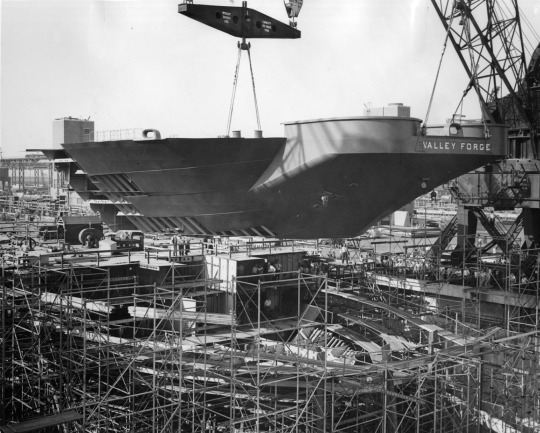
"Completing the biggest lifting job ever attempted at Philadelphia Navy Yard, three 75-ton cranes yesterday hoisted the 193-ton prefabricated stern section of USS Valley Forge (CV-45) into position to be welded to the rest of the ship's hull."
Photographed on June 16, 1945.
Temple Univerity Library: P565002B
#USS Valley Forge (CV-45)#USS Valley Forge#Essex Class#aircraft carrier#warship#carrier#ship#construction#June#1945#Philadelphia Navy Yard#Philadelphia#Pennsylvania#east coast#United States Navy#U.S. Navy#US Navy#USN#Navy#World War II#World War 2#WWII#WW2#WWII History#History#ship construction
74 notes
·
View notes
Note
can I get an infodump about a random topic
ANON I LOVE YOU
ok so really summarized version. The story of Moby dick is based on true events!!! During the 18/19 hundreds one of the main sources of income for coast town was whale hunting! An Nantucket was one of the places where this was pretty the main income. A whaling ship called The Essex set off for a (approximately) two year long voyage from Nantucket USA, to Africa all the way down to south America (they killed all the fucking whales up north so now they had to go south) during this voyage the ship was constantly hit by storms that wrecked it and made them lose three of their five boats, they got another really bad one while traveling though the coasts of Africa though, which they used when they found a whale to chase and kill it. Eventually they reach south America, on the western side, and once there they get FUCKING ATTACKED BY A SPERM WHALE, THIS HAD NEVER REALLY HAPPENED BEFORE, the whale causes the ship to sink and now the survivors had to get on the only three hunting boats and find somewhere they could safely land in. Now the issue comes when the captains second hand keeps insisting that all the nearby islands are full of cannibals, they were actually islands with English missionaries who had settled there decades ago there were no cannibals anywhere but yk racism, so they stay on the boats, and eventually there's no food left, and so in every ship, when someone died from exposure and starvation, they decided to resort to cannibalism. Eventually two of the boats get found, totalling only five people alive between those two boats. The third one was later found with only skeletons remaining. There were eight survivors, three crew members had actually deserted earlier. One in Ecuador before the ship got sunk and two others in an island after the ship sank, they got rescued soon after. that's a summary of cannibalism in the sea :333
30 notes
·
View notes
Text
Dumb shipwreck facts because I need to hyperfixate for a moment:
The only Olympic-class (Britannic, Titanic, and Olympic) ship that was actually unsinkable was the Olympic. Olympic took full advantage of this and became the only merchant vessel in WWI on record to sink an enemy vessel (it didn’t discriminate, either; Olympic actually sank two vessels during its service, one of which was a friendly lightship during peacetime).
It took 150 years to discover what happened to the infamous Lost Franklin Expedition because the English were too racist to ask the natives. The Canadians, meanwhile, found the wreck of one of their ships, HMS Terror, in a fraction of the time by asking an Inuit hunter named Sammy Kogvik for help.
There are at least two wrecks in Lake Erie that we may never find because the lakebed quite literally swallowed them.
On a related note, Lake Erie might have the highest concentration of shipwrecks of any body of water in the world.
Lake Superior is actually the least lethal Great Lake, despite its reputation, but over half of its wrecks are located around Whitefish Point, most notably the Edmund Fitzgerald.
The Bermuda Triangle doesn’t actually have a very high disappearance or wreck rate. It’s considered weird because the gulf stream carries any wrecks and debris out of the search area, making it that much harder to find any remains.
There’s a disturbing tendency for ships, particularly freighters, to not only split in half while they sink, but for the back half (the stern) to keep going, sometimes for miles. The most notable case of this would be the SS Pendleton, an oil freighter that wrecked off the coast of Massachusetts; the rescue of the crew on its stern is considered to be one of the most daring Coast Guard rescues ever pulled off.
Most ships built before 1950 were made with subprime or low-grade metal, which is believed to be part of the reason why they split in half so often. This metal turned brittle in colder water; guess where most of these wrecks were. Some wrecks believed to have fallen victim to this include the Titanic, the aforementioned Pendleton, the Carl D. Bradley, and the Daniel J. Morrell.
An Arctic cruise ship took on a Venezuelan patrol boat and won. Said patrol boat was trying to force the cruise ship, the Resolute, to come ashore. Ships create depressions in the water (you most often see this in the “wake”) called displacement, and it’s generally believed the patrol boat underestimated the strength of the Resolute’s displacement and was sucked into its path, ending up crushed by Resolute’s icebreaker-grade hull.
While we can be reasonably certain what sank the Marquette & Bessemer No. 2 (it was a train ferry with an open back and had previously had a near-accident when a wave slammed directly into the opening, almost flooding it), what we don’t know is what happened before and after. One of its lifeboats was found with nine bodies and the clothing of a tenth. The ship’s steward was found armed with two knives and a meat cleaver, and the captain’s body was found some time later with slash wounds. It’s agreed that the steward killed him, but why remains a mystery.
Moby Dick was based on the sinking of the Essex, a whaling ship that was rammed and sunk by its own prey. The crew resorted to cannibalism to survive; ironically, they would’ve been rescued sooner had they not avoided a nearby island chain for fear of cannibal tribes.
Don’t read about the sinking of the Estonia. Just...don’t. It’s not pleasant. For some hint of how awful it was, despite being reasonably close to the surface no one was ever able to get all the bodies out because of the sheer number of them.
On a much lighter note, the Swedish Navy in the 1700s poured thousands of kroner into building a mighty flagship for their navy, the Vasa...only for the Vasa to sink less than 300 yards into its maiden voyage. Turns out they gave it too many guns, making it too top-heavy, and it capsized.
The Canadian freighter Bannockburn disappeared in a storm in 1902. Almost all of its crew were in their late teens and early 20s; the youngest was 16. Companies would hire younger, less experienced men to work aboard their ships because they were cheaper. The Bannockburn has never been found.
Speaking of Lake Superior shipwrecks, there’s a saying that “Lake Superior never gives up her dead”. It’s not wrong; the temperatures at the bottom are cold enough to halt the decaying process, which prevents the bodies from rising to the surface. The most notable instance of this is Old Whitey, the nickname for a body found in the engine room of the Kamloops who has never been identified. This is also the reason no one is allowed to dive to the Edmund Fitzgerald; the crew’s bodies are still aboard the wreck, and it’s considered disrespectful at best to dive to a place that for all intents and purposes is a graveyard.
It took over 100 years and numerous deaths from scurvy for anyone to realize that eating raw meat can prevent it. They discovered this on a Belgian arctic expedition where one of the crewmen, drawing on past experience, somehow managed to convince the rest of the crew to eat raw penguin, rapidly decreasing the number and severity of scurvy cases onboard.
To end this on a lighter note, the saying “Batten down the hatches” is an actual maritime phrase; hatches are openings in the ship’s deck used to bring cargo inside and, on older ships, allow passengers and crew on deck. Hatches let enormous amounts of water into the ship in bad weather, and are often “battened down” (covered up) to prevent water from getting in. It will probably not surprise you to learn that not battening down the hatches or not doing it properly has caused its fair share of wrecks; notably, it’s believed that the Cyprus, an ore carrier that was said to be leaving a red trail in its wake the day before it capsized, was leaving said trail because its hatches were improperly sealed; water was getting into the hold, mixing with the cargo of iron ore, and then being pumped out, hence the red wake.
#shipwreck#shipwrecks#interesting facts#random facts#indulging in my shipwreck hyperfixation#shipwreck shenanigans#might make posts elaborating on some of these#especially the olympic#that ship did not give any fucks
12 notes
·
View notes
Text

Join us at World of Eldritch County, a queer friendly and inclusive-of-all rp site, where you can explore Arkham through our many forums, take classes at Miskatonic, join a club (or a cult to an old god), and interact with other Arkhamites in our interactive chats!
Welcome to Essex County, Massachusetts, circa the early 1970s, where the cold winds bend the trees and strange eyes gaze out from the dark woods outside Arkham. You’ve just begun your tenure as a student at the prestigious but infamously unlucky Miskatonic University, a school known just as much for haunting tragedy as academic rigor. Things seem different here than they did in the main timeline…better in many ways, worse in others. How? You’ll have to explore. But be careful to not wander too closely to the shadowy woods or the coasts of Innsmouth.
You are not immune to horrors.
Welcome to World of Eldritch County, a 16+ text-based, literate horror rp, based on the works of Howard Phillips Lovecraft and his enduring legacy on genre fiction. At World of Eldritch County, we live for the quirky, weird, oddball, and terrifying in fiction. Do you love horror beyond just Lovecraft?
We have three class of characters on the creation screen:
➳ Townie: You were born in Arkham, and can feel its strange cosmic energy coursing through you. Where else would you go to school but Miskatonic?
➳ Prodigal: You left Arkham once, thinking you escaped your birthplace. But it called you back. It calls all of you back.
➳ Outsider: Whether through intellectual curiosity or unlucky stroke of fate, you were brought to Arkham from the Outside world…. Well. Enjoy your stay.
We are an inclusive rp site, open to all character types and all users (of the correct age). Come join one of our four Miskatonic dormitories! Are you courageous and clever? Join Dunwich! Driven by intellectual curiosity above all else? Join Innsmouth! Ambitious and confident? You’re perfect for Carcosa. Compassionate and loyal? Severn is definitely the dorm for you! Take our quiz after registering to find out which dorm will become your family, during your time at Miskatonic University.
Interested in diving a bit further into the student life? Miskatonic has plenty of interactive classes that offer homework, which allows you to earn points for rewards. Bring prestige to your dormitory by winning the dorm cup or yourself by earning the student cup!
More interested in the rp aspect? Wonderful! We have multiple forum locations for you to roleplay your time at Miskatonic, Arkham, and the other surrounding areas to your heart's content. Speaking of heart, you might want to hold onto that around here….
We have all this and more, including buyable and usable shop items, interactive notice board articles and contests, an active site blog, and multiple in-game chat rooms for short form rp! You can even fight against (or join) one of the dark cults to the old gods around town!
Tired of the normal life? Ready for something a bit more dark and wild? Join World of Eldritch County, and let us show you the cosmos!
#horror#horror rp#lgbtq horror#queer horror#lovecraftian horror#lovecraftian#lovecraft mythos#roleplay#roleplaying#wox#woec#rpg#lovecraft#fhtagn#cthulhu mythos#rp community#rp forum
26 notes
·
View notes
Photo
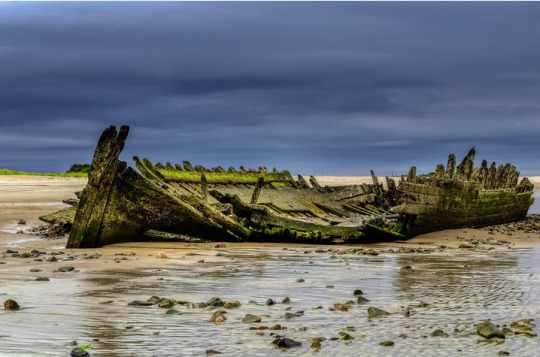
The Ada K. Damon, by Fabiano Lacerda Santos, August 2020
She was a two-mast schooner built in 1875 at H. A. Burnham Boat Building in Essex, Massachusetts. On 26 December 1909, she beached south-southwest of the Plum Island Coast Guard Station, carrying a load of sand during a storm. The storm blew in from the northeast, there was a lot of snow, the anchors broke and came loose, and the ship was stranded on Crane beach at high tide. Fortunately, the ship's crew was safed.
86 notes
·
View notes